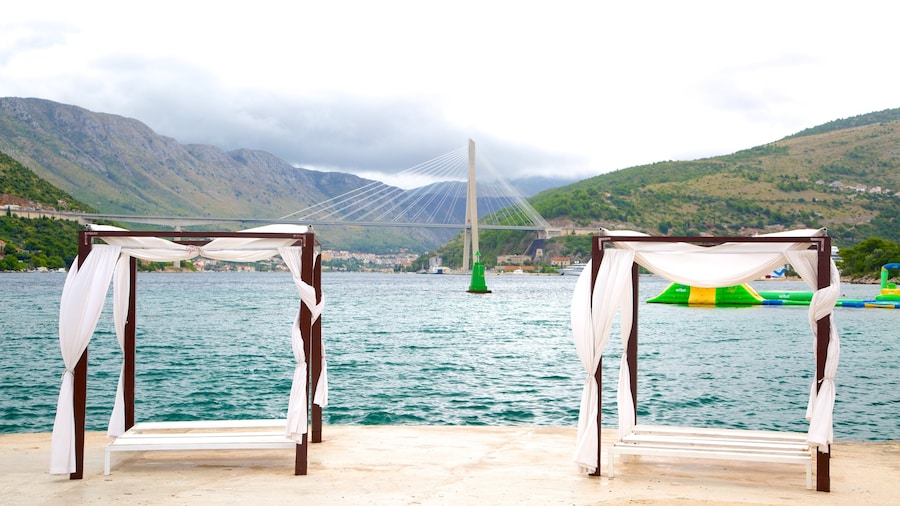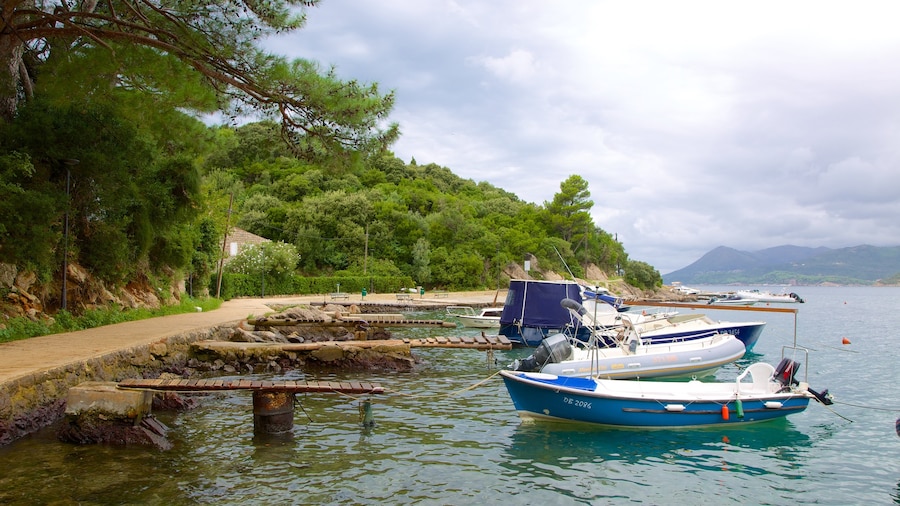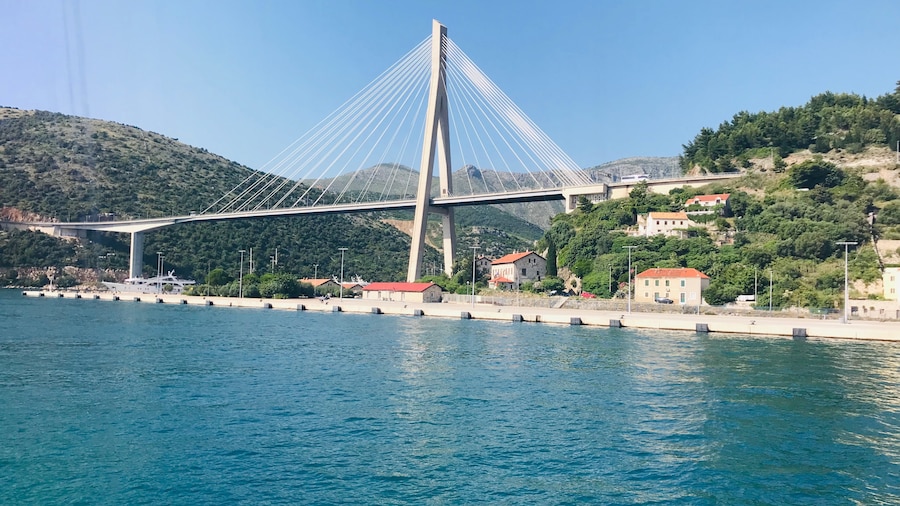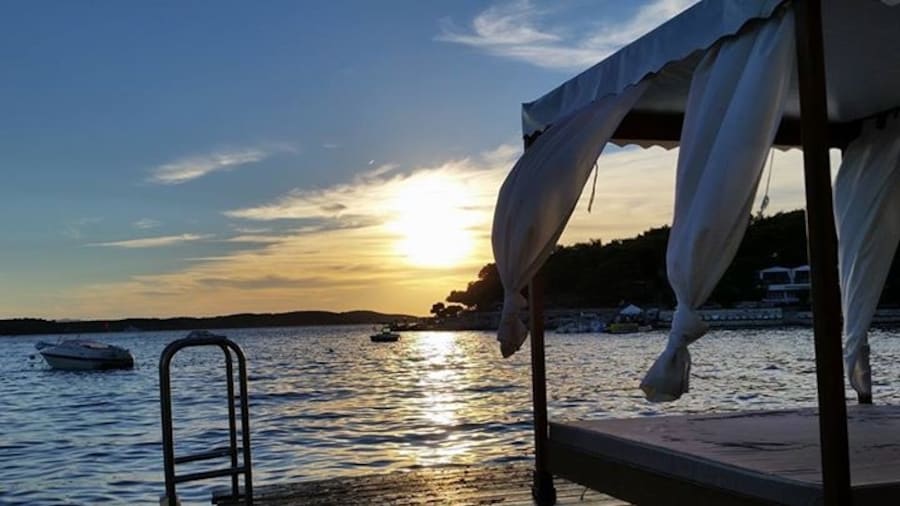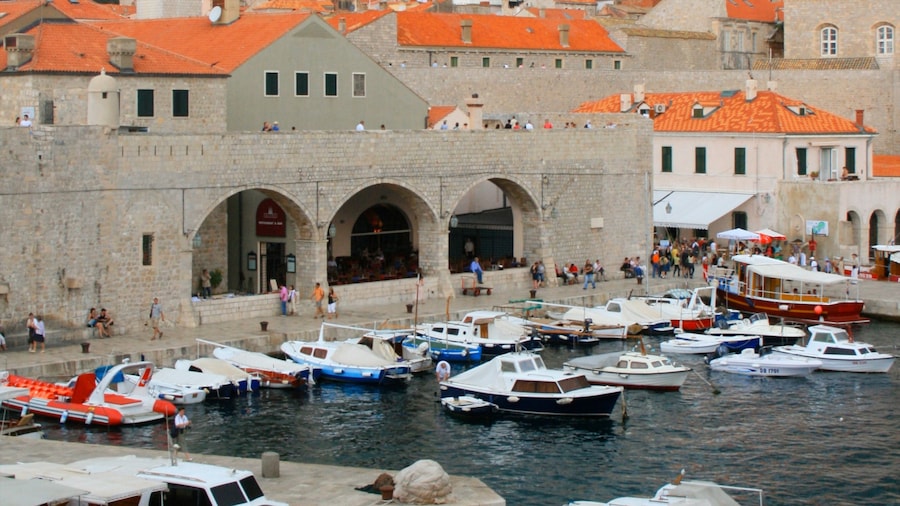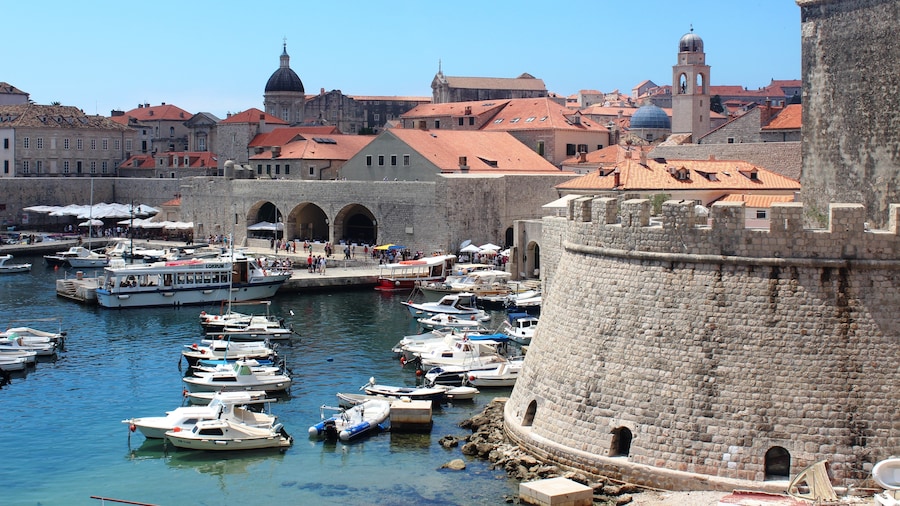Enjoy an afternoon in the sun at this popular beach, a well-equipped stretch of coastline with lots of activities for all ages.
Copacabana Beach is an attractive half-moon shaped expanse of pebbles and concrete in Dubrovnik’s Lapad Peninsula. It is one of the longest beaches in the city, known for its diverse family-friendly activities and scenic vistas.
Rent a sun bed and admire the views over Seka Bay while stretching out under the sun. Focus your gaze on Franjo Tuđman Bridge, which was formerly called Dubrovnik Bridge, one of the world’s largest single-pylon, cable-stayed bridges. Look for ferries as they pass the beach on their way to Gruž. You will also be able to see Daksa Island, the smallest of the 13 islands that make up the Elaphite Archipelago.
Copacabana Beach is a favorite of families because the waters are relatively shallow, providing good swimming conditions for young children. Be sure to swim out to Wibit Water Park, a floating activity course consisting of inflatable water slides and jumps.
Take advantage of the numerous water sports that can be arranged along the beach. Try windsurfing, waterskiing, paragliding or jet skiing. Rent a kayak or canoe and paddle along the scenic Lapad coastline. In the summer, watch teams from the city’s water polo league engage in lively matches.Copacabana Beach can get very busy and noisy in the summer. If that is too lively for you, follow the well-marked path leading down to the secluded Cava Beach. This flat stretch of smooth pebbles and sand is popular with naturists.
Head back to Copacabana and relax at one of the beachside cafés. During the afternoon, enjoy a meal or a cool drink while watching the activity down on the beach. Stop by in the evening for a cocktail at a beach bar or go dancing at the small discotheque.
Copacabana Beach can easily be reached by bus from central Dubrovnik. From the bus stop, you’ll find a path that leads directly to the shoreline. Among the facilities here is a lift at the concrete part of the beach to help people with disabilities get in and out of the sea.





